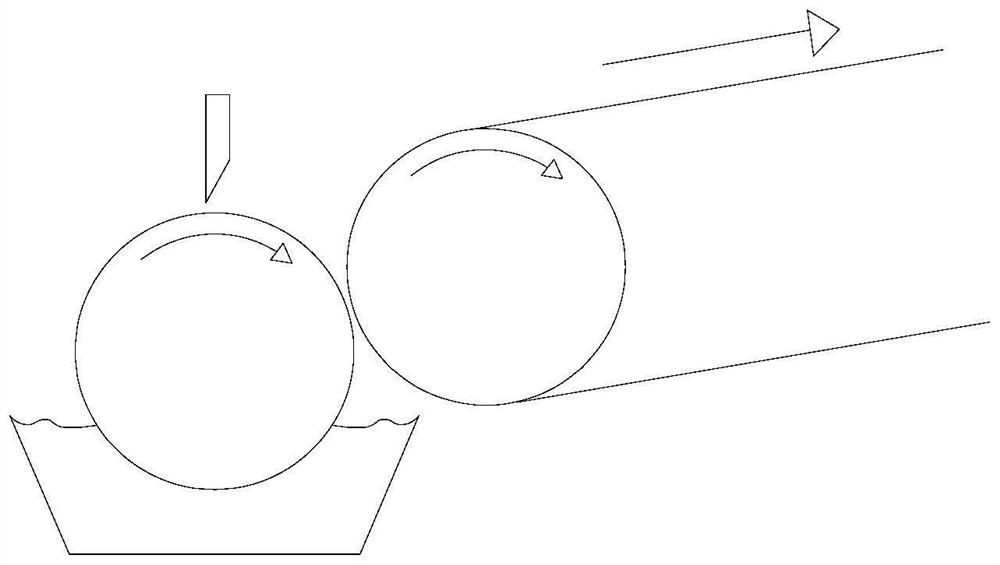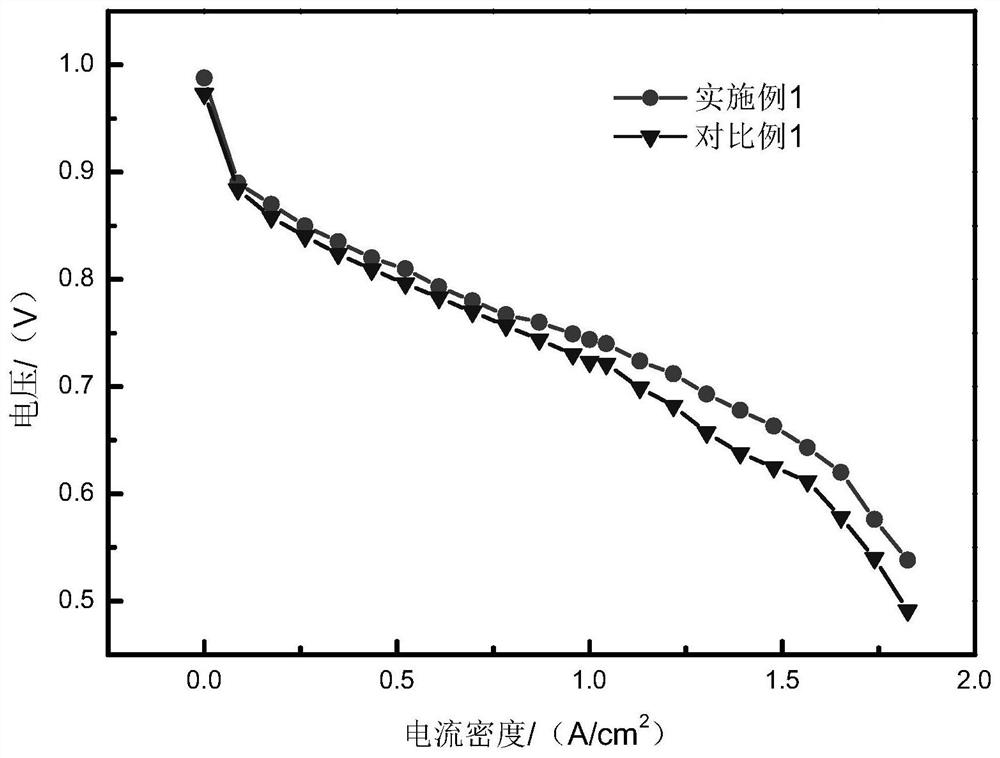Proton exchange membrane fuel cell gas diffusion layer microporous layer and preparation method thereof
A gas diffusion layer and proton exchange membrane technology, applied in solid electrolyte fuel cells, electrical components, battery electrodes, etc., can solve problems affecting gas transmission, slurry infiltration, electrode flooding, etc., and achieve uniform pore structure and gas transmission. Enhanced capacity and drainage capacity, good electrical conductivity
- Summary
- Abstract
- Description
- Claims
- Application Information
AI Technical Summary
Problems solved by technology
Method used
Image
Examples
Embodiment 1
[0024] A method for preparing a microporous layer of a gas diffusion layer of a proton exchange membrane fuel cell, comprising the following steps:
[0025] (1) Hydrophobic treatment of the substrate: impregnate the carbon paper with polytetrafluoroethylene emulsion, dry it in a 70°C oven for 30 minutes, and weigh it. Repeat the above operation several times and weigh until the polytetrafluoroethylene in the carbon paper The content is 5%, then roasted in a muffle furnace at 290°C for 30 minutes, and then heated to 350°C for 30 minutes;
[0026] (2) Mix 200g deionized water, 4g Triton X-100, 20g XC-72 carbon black, and 8.3g polytetrafluoroethylene emulsion with a mass fraction of 60%, stir it mechanically for 2 hours, and then carry out ultrasonic dispersion until To form a uniform slurry, the slurry is coated on the hydrophobically treated carbon paper by reverse roll, after coating, it is dried in an oven at 70°C for 30min, and baked in a muffle furnace at 290°C for 30min, a...
Embodiment 2
[0028] A method for preparing a microporous layer of a gas diffusion layer of a proton exchange membrane fuel cell, comprising the following steps:
[0029] (1) Hydrophobic treatment of the substrate: impregnate the carbon paper with polyvinylidene fluoride emulsion, dry it in an oven at 120°C for 5 minutes, and weigh it. Repeat the above operation several times and weigh until the polyvinylidene fluoride in the carbon paper The content is 7%, and then roasted in a muffle furnace at 290°C for 30 minutes, and then heated to 350°C for 30 minutes;
[0030] (2) Mix 200g deionized water, 4g Triton X-100, 20g XC-72 carbon black, and 8.3g polyvinylidene fluoride emulsion with a mass fraction of 60%, stir them mechanically for 2 hours, and then carry out ultrasonic dispersion until A uniform slurry is formed, and the slurry is coated on the hydrophobically treated carbon paper by a forward-rotating roll. After coating, it is dried in an oven at 120°C for 30 minutes, and then baked in ...
Embodiment 3
[0032] A method for preparing a microporous layer of a gas diffusion layer of a proton exchange membrane fuel cell, comprising the following steps:
[0033] (1) Hydrophobic treatment of the base material: impregnate the carbon cloth with polytetrafluoroethylene emulsion, dry it in a 70°C oven for 0.5h, and weigh it. Repeat the above operation several times and weigh until the polytetrafluoroethylene in the carbon cloth The ethylene content is 5%, and then roasted in a muffle furnace at 290°C for 30 minutes, and then heated to 350°C for 30 minutes;
[0034] (2) Mix 100g of deionized water, 100g of n-propanol, 4g of Triton X-100, 10g of XC-72 carbon black, 10g of carbon nanotubes, and 14.3g of polytetrafluoroethylene emulsion with a mass fraction of 60% , mechanically stirred for 2 hours, and then ultrasonically dispersed until a uniform slurry was formed. The slurry was coated on the carbon paper after water-repellent treatment by reverse roll, and dried in an oven at 70°C for ...
PUM
| Property | Measurement | Unit |
|---|---|---|
| thickness | aaaaa | aaaaa |
| quality score | aaaaa | aaaaa |
| thickness | aaaaa | aaaaa |
Abstract
Description
Claims
Application Information
 Login to View More
Login to View More - R&D
- Intellectual Property
- Life Sciences
- Materials
- Tech Scout
- Unparalleled Data Quality
- Higher Quality Content
- 60% Fewer Hallucinations
Browse by: Latest US Patents, China's latest patents, Technical Efficacy Thesaurus, Application Domain, Technology Topic, Popular Technical Reports.
© 2025 PatSnap. All rights reserved.Legal|Privacy policy|Modern Slavery Act Transparency Statement|Sitemap|About US| Contact US: help@patsnap.com



